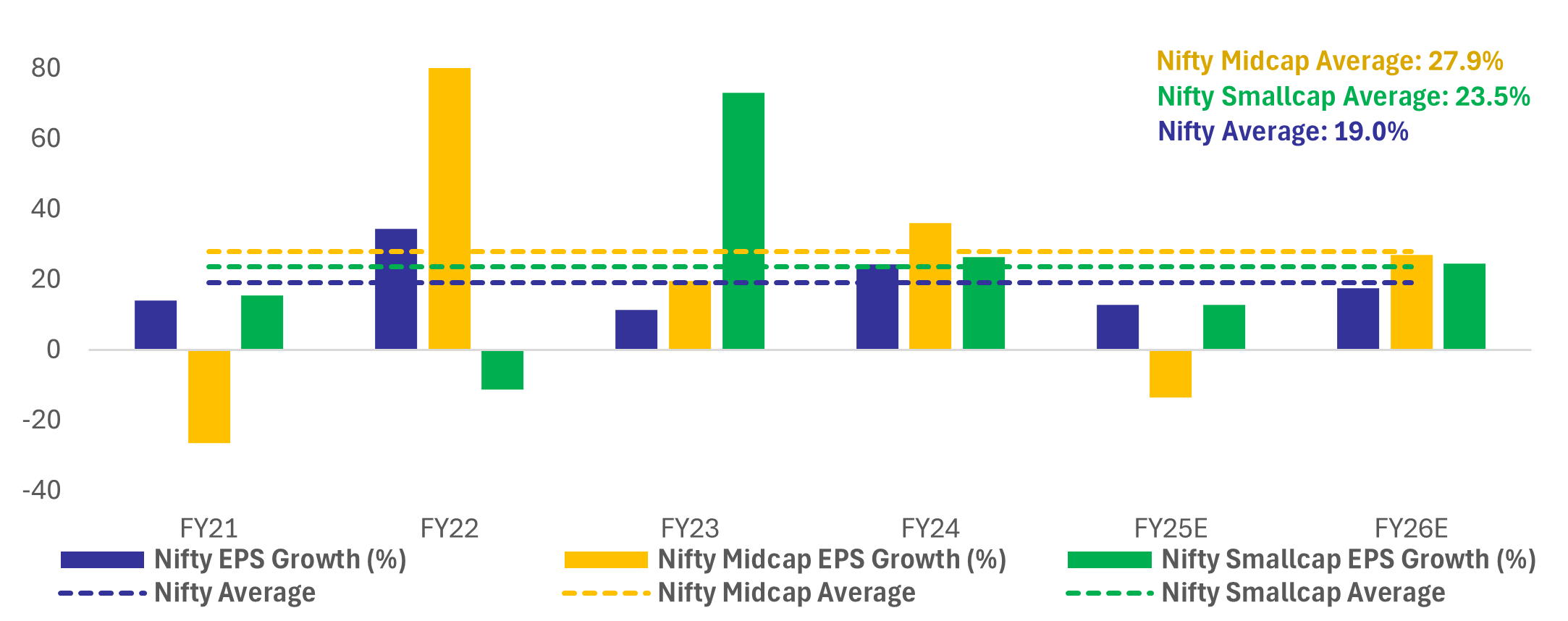Capitalising on India (Part III)
In the final instalment of our series on capitalising on India’s growth, we turn our attention to a market segment rich in opportunity — small and mid-cap companies. This segment not only offers some of the highest growth potential but also presents attractive entry points from a valuation perspective, driven by information asymmetry and pricing inefficiencies. These factors make small and mid-caps particularly compelling for insightful and experienced locally based (in India) asset managers, who are well-positioned to uncover value where broader those focused on broader investment universes (Global, Emerging Markets, Asia) may overlook it or be obsessed with the need for liquidity.
Focusing on the Alpha-rich Segment: Small and Mid-cap
The preference of EM fund managers, as well as FIIs and FPIs, for large-cap companies is primarily driven by considerations of liquidity and perceived stability. However, this approach often neglects the broader growth narrative in India, where the true alpha sweet spot lies in the mid-cap and small-cap (SMID) segments.
From FY21 to the projected FY26, mid-cap and small-cap companies have shown exceptional performance, with average annual earnings growth of 27.9% and 23.5%, respectively. The SMID segment’s robust forecast, with projected earnings growth of around 25% in FY26, underscores the structural growth opportunities within India’s broader market.

By focusing exclusively on large, liquid companies, EM funds frequently miss these significant alpha opportunities. In contrast, India-only funds, which adopt a liquidity-agnostic approach and incorporate SMIDs into their portfolio construction, are better positioned to capitalise on this high-growth segment and unlock the full potential of India’s equity market.
Annual EPS Growth for Nifty Large Cap, Mid Cap and Small Cap

Source: Motilal Oswal, data as of 31/10/2024
Key points for the growth of SMID segment:
- Superior EPS Growth in SMID Segments: Since the COVID-19 pandemic, earnings per share (EPS) growth have been stronger in mid-cap and small-cap segments compared to large caps. However, this growth tends to be more volatile and sensitive to economic cycles.
- Abundant Investment Opportunities: India boasts 5,000 listed stocks, with the top 1,000 being liquid and investable. The small- and mid-cap (SMID) segments, in particular, have historically served as fertile ground for generating alpha due to their diversity and inefficiencies.
- Impact of Digital and Financial Inclusion: The increasing digitisation and financialisation of the Indian economy have enabled Micro, Small, and Medium Enterprises (MSMEs) to expand their reach and scale operations at lower costs, fostering growth in these segments.
- Government-Led Growth Support: Infrastructure development initiatives by the government have bolstered the resilience and growth of smaller firms across India, further enhancing the potential for strong returns in the SMID space.
Putting it altogether
In summary, the most effective way to access the Indian stock market is to:
1) Stay invested in the market long-term to maximise returns
2) Partner with local experts for superior alpha generation
3) Don't forget about small and mid-cap market segment
An actively managed India-only fund that is cap agnostic, rather than passive or benchmark aware, offers the most attractive opportunity for investors looking to capitalise on one of the most compelling growth stories in the financial markets this decade.
5 topics
1 stock mentioned
